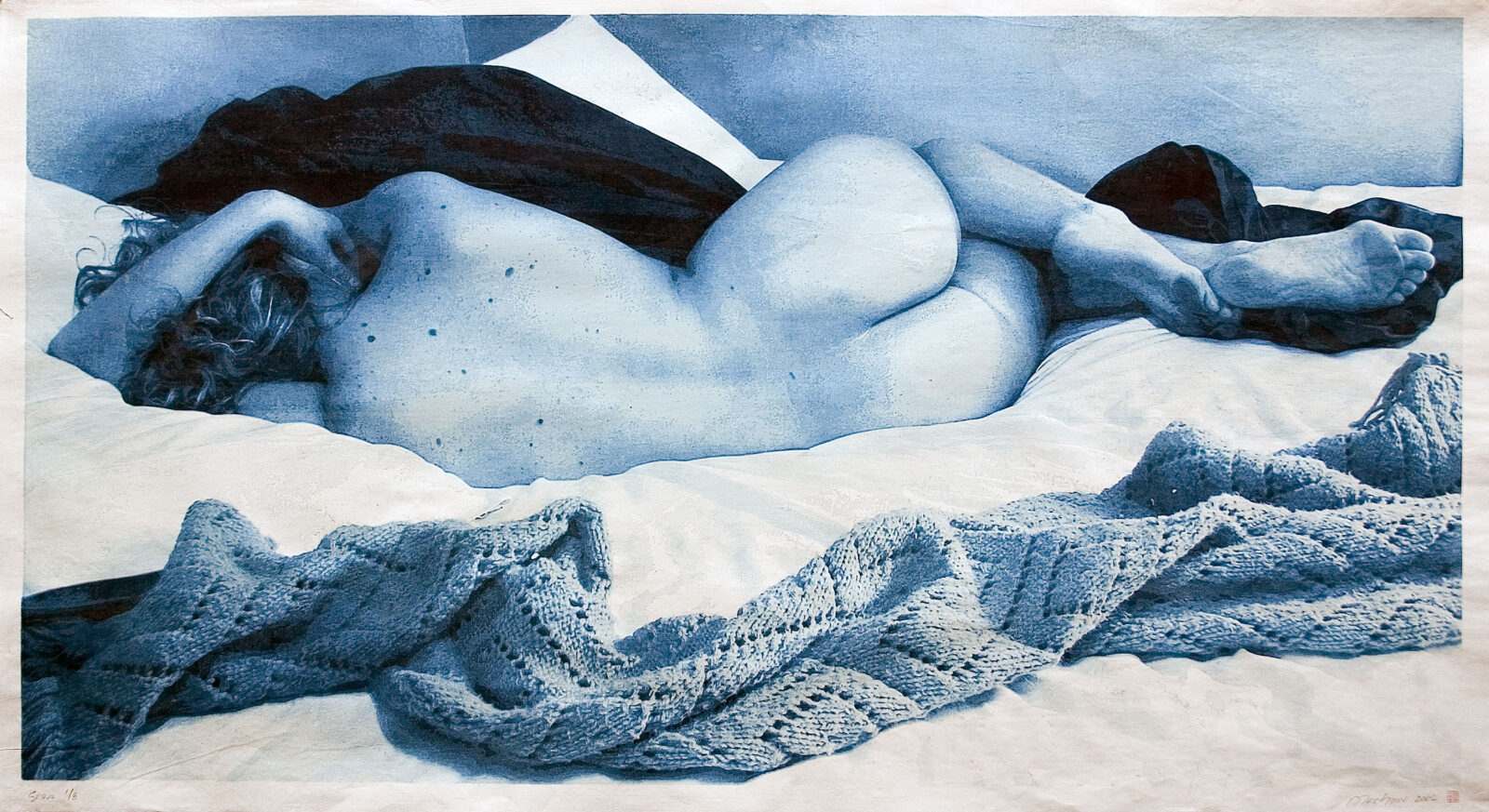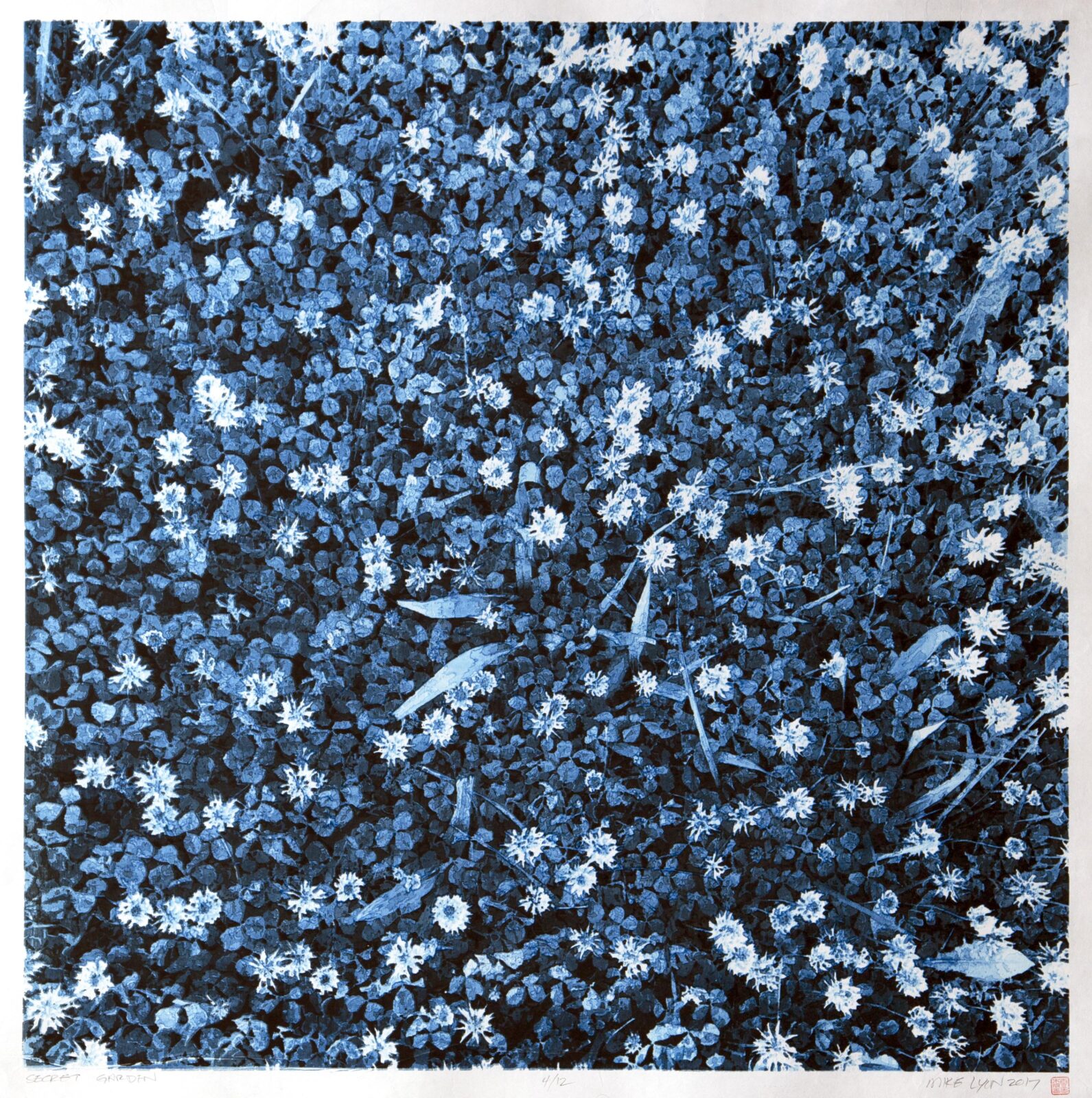Curated by Sandy Wimer and Sheri Lullo
January 3 – March 13, 2018
Feigenbaum Center for Visual Arts
Crowell and West Galleries
Union College
Mokuhanga: Impressions Past and Present

Mokuhanga refers to the traditional Japanese technique of hand-printing images from carved blocks of wood. Moku means “wood,” and hanga which is a combination of the words for “print” or “impression” (han and “picture” ga), refers to “printmaking.”
This exhibition brings together prints created by three generations of artists working with mokuhanga techniques. The earliest works, which are part of Union College’s Permanent Collection, date to the latter half of Japan’s Edo period ( 1615-1868), the formative era of this woodblock printing tradition. Two works by the modern Japanese printmaker Umetaro Azechi (1902-1999) are also included by generous loan from James McNaughton. The bulk of the exhibit consists of prints by contemporary American and Japanese artists who employ traditional techniques, sometimes exclusively, and at other times in combination with other processes and new media.
The Edo prints on display. belong to the genre of ukiyo-e or “pictures of the floating world.” The concept of ukiyo (“floating world”) is original to Buddhism. It refers to the ephemeral nature of the phenomenal world, and was adapted to an Edo period sensibility and aesthetic that centered on the pursuit of the present moment. Ukiyo-e prints, mass produced and affordable, catered to an emerging middle class of consumers living in the burgeoning urban centers of Edo Japan, the final yet lengthy and relatively peaceful period of rule by a military elite. The images were relatable as a reflection of the visual landscapes and interests of samurai-bureaucrats and townsmen. They often combined reality with wild fantasy, and communicated with poetic sensibility the beauty and brashness of everyday life-urban and rural, public and private.
Though many are familiar with Katsushika Hokusai, Ando Hiroshige, and other artists of Edo period ukiyo-e, their works were actually produced through a collaborative effort that included carvers, printers, and publishers. For Umetaro Azechi and the contemporary artists featured in this exhibition, these facets of the creative process fall within the sole domain of the artist. Beginning in the early to mid-twentieth century, artists like Azechi, who was part of the Sosaku Hanga (creative printmaking) movement, initiated this significant departure as they began to carve their own blocks, brush their own pigments, and wield their own barens (handheld rubbing disks) to transfer their designs. Their prints reflect new ways of seeing and relating to a modernizing and industrializing Japan, one dramatically different from its Edo past.
Like their Edo forebears, the contemporary artists featured in this exhibition have created works that sift through our mundane material worlds, illuminate the patterns and breathtaking phenomena of nature, and thoughtfully attend to social and political issues. Like Azechi, all explore form and pattern through process. Their works convey not only a sensitivity to materials and pigments, but also conjure the embodied practice of carving, layering, pressing, and building up forms. For these reasons, the works must be viewed for both their imagery and their surface qualifies,
and experienced in person as physical artifacts.
The exhibition title, Impressions Past and Present, can thus be understood as twofold in meaning: it conveys the wide-ranging historical sensibilities of the prints on display, but also the notion chat these works are just as much about process as they are about image.
— Sheri Lullo, Curator
Contemporary artists included in the exhibition:
- Annie Bissett
- Matt Brown
- David Curcio
- Kevin Frances
- Takuji Hamanaka
- Keiko Hara
- Shoichi Kitamura
- Mike Lyon
- Hiroki Morinoue
- Melissa Schulenberg
- Yasu Shibata
- April Vollmer
See also: a review of the exhibition in the Schenectady daily news
Each of us, I think, had two pieces in the exhibition

2006 “Sara Reclining” 42 x 77 inches, mokuhanga from 17 blocks, edition of eight 
2017-08-09 “Secret Garden” 36×36 inches, mokuhanga from 12 blocks, edition of twelve

